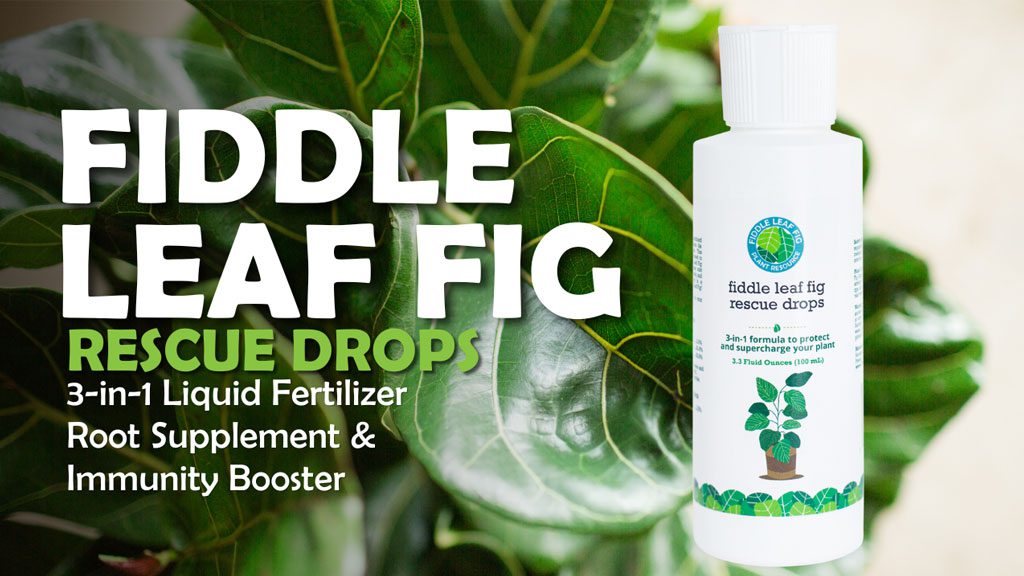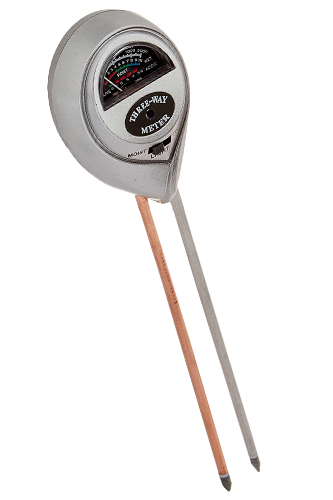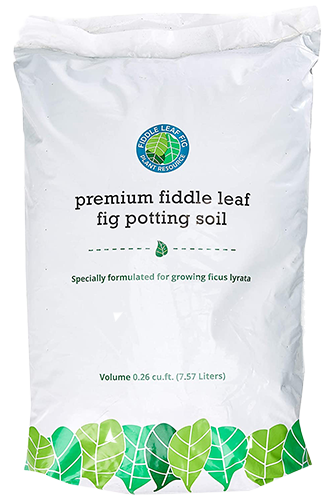Some plants look so similar that it’s hard to tell them apart. Others share part of the same name, making it hard to distinguish exactly what plant you’re looking at.
When it comes to Ficus vs. fiddle leaf fig plants, some people use both terms interchangeably, but let’s figure out what their differences are. Below, we are going to look at the Ficus vs Fiddle leaf debate and figure out what exactly makes each one unique.
Comparing Ficus vs. Fiddle Leaf Fig provides insights into the unique characteristics of each plant.
Are Ficus vs fiddle leaf different?
Some say that ficus and fiddle leaf figs are two different species of plants, while others claim that they are simply different varieties of the same species. So, what’s the difference between ficus and fiddle leaf figs?
Ficus is a large genus of plants that includes more than 800 species. Fiddle leaf figs (Ficus lyrata) are just one type of ficus plant. Fiddle leaf figs are native to western Africa and grow best in tropical climates. They are characterized by their large, leathery leaves, which are often variegated or mottled.
Ficus plants are generally easy to care for and can tolerate a wide range of light conditions, from full sun to low light. They prefer warm temperatures and high humidity, but can also adapt to drier conditions. Fiddle leaf figs are a bit more finicky than other types of ficus and need more consistent care in order to thrive.
So, while fiddle leaf figs are technically a type of ficus plant, they have some distinct characteristics that set them apart from other members of the genus. If you’re looking for a low-maintenance houseplant that can tolerate a range of controlled temperatures, both Fiddle Leaf Fig trees and Ficus trees in general are a great choice.
With all the different names in the plant world, it can be a little confusing when two terms are used interchangeably. The bottom line is that yes, Ficus vs. Fiddle Leaf Fig trees are different. Kind of. In short, a Fiddle Lead is a Ficus, but not all Ficus trees are Fiddle Leaf.
In the world of houseplants, the debate of Ficus vs. Fiddle Leaf Fig is a common one among enthusiasts.
Ficus vs. Fiddle Leaf Fig: What is a Ficus?
Ficus is a classification of woody trees, shrubs, and other plants in the Moraceae family. There are many different types of plants under the Ficus umbrella, including Weeping Figs, Fruiting Figs, Fiddle Leaf Figs, and more.
Ficus trees are generally a tropical tree that prefer temperate climates and are relatively easy to care for. You can typically find one or two different kinds of Ficus trees, shrubs, or plants in plant nurseries in your area, sometimes more! Online plant retailers will usually give you a more widespread variety to choose from. Read more about Ficus vs. Fiddle Leaf Fig trees.
To make informed choices for your indoor garden, delve into the comparison of Ficus vs. Fiddle Leaf Fig.
Ficus Weeping Figs
Weeping Fig trees are a very popular indoor tree. It looks beautiful, it thrives in temperatures that homes are normally kept at, and it’s pretty easy to take care of. It has dense, glossy leaves that pop against the light brown trunk and branches, and is often found in many staged homes and offices.
These trees are pretty tough, and can handle some dryer environments, but to thrive they need good growing conditions including temperatures in the 60-80 degree range, the right amount of water, and bright indirect sunlight.

Rubber Plants
Exploring the differences between Ficus vs. Fiddle Leaf Fig is crucial for effective indoor plant care.
Rubber plants are also a very popular houseplant. Its botanical name is Ficus Elastica. They grow 3-6 feet tall when kept in a pot indoors, but can also be planted outside if your climate allows it. The rubber plant is another Ficus tree that requires bright, filtered sunlight to thrive, and while it can tolerate some direct sunlight, it’s not recommended for long periods.
Rubber plants are a shrub-like plant with thin stems and larger leaves. It is a beautiful houseplant, and as long as you maintain the proper light and water requirements, this plant will brighten up your space for a long time. Continue learning more about Ficus vs. Fiddle Leaf Fig trees.

Ficus Benjamina
Ficus Benjamina is just the botanical name for Weeping Fig trees. They make excellent houseplants and can even be grown outside if your temperatures remain in the 60 degree to 80 degree range. They can tolerate slightly lower or higher temperatures, but it’s not recommended for an extended amount of time.
Many times, this tree will simply be listed as “Ficus” in stores or plant nurseries because it is the plant most people think about when they hear the word “Ficus.”
Fruiting Fig Trees
Here is more information about Ficus vs. Fiddle Leaf Fig trees. Fruiting Fig trees are also becoming more popular with each new year. Like its botanical relatives, this tree is easy to grow. It’s a bit hardier than the other versions of Ficus trees, and produces delicious figs for you to enjoy! You can grow this tree in USDA zones 8 and up, although too much heat and sun may harm this tree.
There are many different varieties of fig trees, so if you’re considering one, make sure to look up the different types and match one to your environment and your needs.
Subgenus Ficus
Subgenus Ficus is the term used to classify all of the different types of Ficus plants. In their natural habitat, Ficus plants are an important food source for many animals, including monkeys, bats, and birds. They are also a source of latex, and most of the tree can be used for many different things.
Subgenus Pharmacosycea
The ficus tree is a member of the Moraceae family, which includes over 1,000 species of plants. The fiddle leaf fig is a member of the subgenus Pharmacosycea within the Moraceae family. This subgenus includes only about 150 species of plants.
One of the main differences between these two types of ficus is their appearance. Ficus trees are typically tall with a single trunk, while fiddle leaf figs are shorter with multiple stems. Ficus trees also have smooth, leathery leaves, while Fiddle Leaf Figs have large, wavy leaves.
Another difference between these two types of ficus is their growth habits. Ficus trees in general are usually fast-growing and can reach up to 100 feet tall, while fiddle leaf figs are slower-growing and usually only reach about 10-15 feet tall. Most Ficus trees can tolerate a full day of sun, while Fiddle Leaf Figs prefer indirect sunlight.
Subgenus Sycidium
The Ficus subgenus Sycidium is a group of about 100 species of figs found in the tropics. They are small to medium-sized trees with smooth bark and elliptical leaves. The fruit is a small, fleshy drupe.
The Ficus subgenus Sycidium includes the following species:
- Ficus aurea – the golden fig or yellow-fig tree, native to Mexico, Central America, and the Caribbean
- Ficus benjamina – the weeping fig or Benjamin fig, native to Asia and Australia
- Ficus cotinifolia – the red leaf fig or prune fig, native to Mexico and Central America
- Ficus elastica – the rubber fig or Indian rubber tree, native to India and Nepal
- Ficus ingens – the giant fig or African banyan, native to Africa
- Ficus lyrata – the fiddle-leaf fig or trumpet fig, native to Africa
Even within their own subgenus, each type of Ficus tree has many variations, making this a very interesting family of plants.
Subgenus Sycomorus
The Sycamore Fig (Ficus Sycomorus) has leaves that look like a mulberry. It is native to Africa and the Tropic of Capricorn, and grows up to and sometimes over 65 feet tall. This tree requires the presence of a fig wasp to produce the fig fruit, like the Fruiting Fig tree, and was even considered the Ancient Egyptian’s “Tree of Life.”
Although this tree still grows in many places, there are some areas of the world where the wasp that can fertilize the flower that produces this tree’s fruit has gone extinct. In those areas, the tree will still grow, but will not produce the fig fruit.
Subgenus Synoecia
Subgenus Synoecia is a type of Ficus tree that originated in Asia. It produces a fig with a more pronounced point on the bottom, and also requires fertilization from a Fig wasp. The leaves of this subgenus are usually smaller and smoother than some of the other Ficus subgenus.
Subgenus Urostigma
The Ficus subgenus Urostigma includes some of the most popular houseplants, such as the Fiddle Leaf Fig and rubber plant. These plants are known for their large, glossy leaves and easy-care requirements. While both are great choices for indoor plants, there are a few key differences between these two subspecies.
Fiddle Leaf Figs are native to tropical Africa, while rubber plants are native to Southeast Asia. This means that fiddle leaf figs will require more humidity than rubber plants. Fiddle leaf figs also have a tendency to drop their leaves if they are not getting enough light, while rubber plants will tolerate lower light levels.
Ficus Urostigma is similar to the Fruiting Fig, but it does not produce large fig fruit. This subgenus produces smaller, berry-like figs. This Subgenus is even broken down further into different leaf patterns, but each produces these berry-like figs.
What is a Fiddle Leaf Fig? Ficus vs. Fiddle Leaf Fig Continued
When it comes to indoor greenery, understanding the distinctions in Ficus vs. Fiddle Leaf Fig trees is essential.
A Fiddle Leaf Fig tree is just one of the many different types of Ficus trees. Ficus Lyrata is the botanical name for the Fiddle Leaf Fig tree, and it is also one of the most popular trees that grow well inside the home.
It only requires bright light, a relatively stable temperature between 60 to 80 degrees, and can sometimes be taken outside for a short period of time, although not in direct sunlight.
The Fiddle Leaf Fig has much larger leaves on a medium brown trunk, and it is quite the sight. These trees are widely available in many plant nurseries and even hardware stores. In a Ficus vs Fiddle leaf debate, each one has their own unique qualities that make them both excellent houseplants, so it’s important to look at the characteristics of each before making a decision. (You could always get one of each, too!)
Subgenus Urostigma
Ficus Urostigma is closer in looks to the Fruiting Fig. It can grow rather tall in its natural habitat. As a houseplant, their size is more manageable, especially when the tree is placed in the proper sized pot. These trees are neither a true Fiddle Leaf Fig nor do they represent the whole Ficus family, but they are part of the Ficus family.
Like many of the other Ficus varieties, they are also becoming more popular as a houseplant and also as an addition to home and business landscapes.
Ficus Lyrata
Ficus Lyrata is simply the botanical name for the common Fiddle Leaf Fig tree. Having all different names can be confusing, but botanical names help to separate different plant species and the subgroups of that species. Just think of how hard it would be to distinguish between all these different Ficus trees if they didn’t have their own name to go by!
Verdict are Ficus vs Fiddle Leaf Fig the same
In short: no. A Fiddle Leaf is a Ficus, but not all Ficus trees are Fiddle Leafs. There are a lot of Ficus varieties, and they all make excellent houseplants. If you are looking into adding a Fiddle Leaf Tree or any of the other Ficus varieties to your home, make sure to choose one that would tolerate your home environment well.
I hope this has helped to clear up the difference between the broader group of trees that fall under the Ficus name and the Fiddle Leaf Fig tree. Ficus vs. Fiddle Leaf Fig plants are both wonderful to care for!
If you have questions or need support for your bushy fiddle leaf fig, come join our online community by clicking below!


















